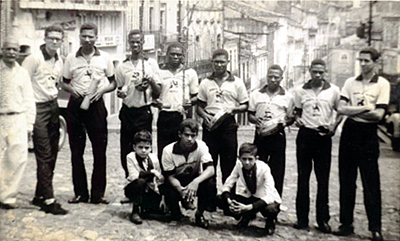So, rice and beans are not your thing? Well, you’re in luck, because Brazilian cuisine has an enormous variety of mouth-watering options besides arroz e feijão. Here are just a few – enjoy the pictures!
Recipes for each dish available upon request.
Moqueca
Moqueca is a seafood stew that can be made with fish, shrimp, crab, or lobster, with onions, garlic, tomatoes, cilantro, and other ingredients. There are two types:
Moqueca baiana – This version is from the state of Bahia, where the cuisine is heavily influenced by African traditions. This moqueca includes coconut milk and dendê (palm) oil – which is what gives it that lovely orange color!
Moqueca capixaba – From the state of Espírito Santo, this version of the dish was influenced by indigenous traditions and includes olive oil and urucum pigment.
Pão de Queijo
This cheesy bread is popular in the states of Minas Gerais and Goiás. It is made of cassava flour, butter, milk, eggs, and cheese. Chewy and delicious – especially when hot!
Coxinha
Shredded chicken is covered in batter and fried. “Coxinha” means “little thigh” and refers to the fact that they were originally made with chicken thighs. This snack is very common in Brazil and Portugal.
Bacalhau
Bacalhau is dried, salted codfish, brought to Brazil by the Portuguese. It is used in salgados (salty snacks) especially bolinhas de bacalhau (bacalhau balls), which are a common appetizer in bars – the salty bacalhau goes perfectly with a cold beer!
It’s also common to eat bacalhau during Lent, particularly on Holy Friday, when a traditional dish is bacalhoada (bacalhau stew) – recipe here.
Tapioca
Tapioca’s prevalence in Brazilian cuisine (particularly in the northern and northeastern regions) is thanks to indigenous influence. The word “tapioca” comes from tipi’óka, which is the Tupí name for this starch extracted from the cassava root. It can be made into a type of cake as in the picture above (which is topped with condensed milk) or fried into a sort of chewy pancake that can be filled with meat, chicken, coconut, guava paste, chocolate, or doce de leite. Yum!
Caruru
Caruru may not be so pretty to look at, but it tastes good! Originally from Africa, it is a traditional Bahian dish made with okra, onion, shrimp, palm oil, and nuts. Caruru is a typical accompaniment to acarajé, a deep-fried bean patty filled with fish paste, salad, shrimp, and hot pepper, commonly sold on the streets of Bahia.
Pirão
Nothing is wasted in the Brazilian kitchen – the water in which fish or meat has been cooked is mixed with cassava flour to make the thick, flavorful porridge known as pirão, which is served as an accompaniment to the main meal. There is meat pirão, vegetable pirão, bean pirão, chicken pirão, fish pirão, and milk pirão.
Doce de Abóbora
Sweetened squash/pumpkin with coconut and cloves – a dessert of Portuguese origin.
Farofa
Toasted manioc flour served as an accompaniment to meat and beans. There are a zillion different ways to make farofa, in both sweet and savory varieties: my Brazilian recipe book has variations with banana, cauliflower, palm oil, apple, butter, chicken, eggs, tomato & pepper, and tortoiseshell (!)
Churrasco
Vegetarians, avert your eyes! Churrasco, or Brazilian barbecue, includes chicken, sausage, bacon, pork, chicken hearts, and about a zillion different cuts of beef. The meat is typically seasoned with salt and grilled on the giant skewers shown in the photo. In churrascarias (restaurants), waiters come around with the skewers and cut pieces of meat directly onto your plate. It’s also common for Brazilians to have a churrasco on the weekend with friends and family.












